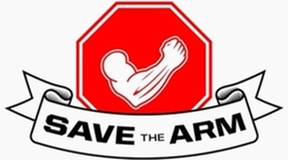In 2003 the National Vascular Access Improvement Initiative (NVAII) was initiated by the following groups.
The Centers for Medicare & Medicaid Services (CMS)
The End Stage Renal Disease (ESRD) Networks
The Institute for Healthcare Improvement (IHI)
Members of the kidney community
The result of this work was a set of guidelines and recommendations known as the Fistula First Change Package which included a set of improvement recommendations and tools. This is available for download here.
Rationale For, Goals and Achievements of the Fistula First Breakthrough Initiative:
“Hemodialysis is the most common treatment for End Stage Renal Disease (ESRD). About 330,000 Medicare beneficiaries currently receive this treatment. During hemodialysis, tubes are used to carry the blood between the body and the dialysis machine. This requires the patient to have an access to the bloodstream. For most patients the best access is a fistula. An arteriovenous (AV) fistula is the surgical joining of a vein and an artery usually in the forearm in order to provide an access for dialysis. Fistulas are considered to be the “gold standard?20for establishing access to a patient¡¦s circulatory system. Fistulas last longer, need less rework or repairs, and are associated with lower rates of infections, hospitalization, and death.”
“The goal of the Fistula First Breakthrough Initiative is to increase the use of fistulas which is one of the objectives of the Department of Health and Human Services Healthy People 2010. The current goal is to have fistulas placed in at least half of all new hemodialysis patients and to have a minimum of 66 percent of all existing patients who continue dialysis to use a fistula. At the end of 2005, 41 percent of prevalent patients on hemodialysis were dialyzed with a fistula, a 24% improvement from the 33% rate in 2003. This translates into improved and extended lives for thousands of people who suffer from kidney disease. Eventually, CMS would like to improve fistula use rates to levels seen in Europe and Asia, on average 70% and 80% respectively.” (Source: CMS Fistula First Breakthrough website)
See how Medicare is continuing their efforts with the End Stage Renal Disease Quality Initiative (ESRDQI).



